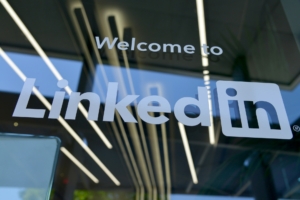Better than a Side Hustle: Buying and Scaling a Business
 Many Americans have come to realize that the economy of today moves lightning-fast and can change in an instant. Because of this, many workers have started looking for alternative methods of making money, and one of those methods is to start a small business as a side hustle.
Many Americans have come to realize that the economy of today moves lightning-fast and can change in an instant. Because of this, many workers have started looking for alternative methods of making money, and one of those methods is to start a small business as a side hustle.
What many Americans do not realize, however, is that a side hustle can only be life-changing if you can convert it into a full-time focus. It takes a bold person to walk away from the stability of a career and move into working for one’s self as an entrepreneur.
But what if you don’t want to walk away from a career to build a business from the ground up? Then, you might buy an already successful business and add your skills to take it to the next level.
Get to Know the Market
So, what are the types of businesses that are doing well? What are the brands that are getting a lot of attention but might be overhyped? What are the underrated buys no one is talking about?
Research on the Internet is helpful (that’s where you found this article, after all), but this is also where getting to know a business broker can pay off. Reaching out to those who specialize in helping individuals or companies both buy and sell businesses is a smart first step into finding the right kind of business. You can get their inside knowledge of current buyers who may be looking to buy up small businesses and identify what their key purchasing points may be.
Making those connections early is like finding a map when you are lost in the wilderness. It can guide you to safer areas.
Set the Foundation
Once you know what buyers are looking for in a small business, you need to consider your skills and interests. Sure, if you have a degree in accounting, that’s an obvious skill set, but think about all the things your colleagues praise you for that don’t fit neatly into a resume and, thus, aren’t top of mind when you think about skills. Are you great with communicating ideas to outsiders, or are you the person people look to in order to shepherd a project from start to finish, or are you the detail person everyone counts on to pick up that missing line of code or catch that typo? These sorts of skills are invaluable for business ownership.
Buying and scaling a business will be something that consumes a lot of your time and energy, so going forward with something that interests you will help sustain you through those moments that break other business owners. Being a great accountant won’t get you through back-to-back 16-hour days unless what you are doing provides you with satisfaction or engages your sense of wonder throughout the process.
Find the Right Fit
You’ll want to stay patient through the process. You need to find the right fit for your skills and your budget. You might be looking to slowly replace your full-time income or you might be ready to jump in and scale the business to the moon. Excitement and motivation won’t be enough. You’ll need to look at opportunities.
Some of these opportunities include:
- Areas of internal improvement the seller didn’t explore sufficiently (or at all)
- Products and services the seller didn’t have capital to create and deploy
- Basic best practices in digital marketing that the seller never implemented
Ultimately, diversifying your income through buying and building a business is a smart way of insulating yourself from a rapidly evolving and fluctuating economy. Once you have the right partnership and the right systems for building and scaling, you can put them to work making sure your time on the economic roller coaster of today is a joyful and rewarding experience.
If you are looking to skip the start-up and buy into a business that has already proven itself, give us a call. It’s what we do.

 It’s no secret that
It’s no secret that  LinkedIn is a tool that can
LinkedIn is a tool that can  The end of the year can be very hectic for business owners. They spend their time ensuring their projects get completed, customers get billed, and that there is enough time left to spend with family and friends. One task often overlooked during December is an end-of-year adjustment for tax strategy. Optimizing the business’s financial position for the coming year while minimizing its tax liability is a critically overlooked opportunity. With that tax strategy, consideration must also be given to how it may affect the viewing of the financial reports for the business. Potential buyers will want to know that the business is fiscally strong and that the tax history and reporting are accurate.
The end of the year can be very hectic for business owners. They spend their time ensuring their projects get completed, customers get billed, and that there is enough time left to spend with family and friends. One task often overlooked during December is an end-of-year adjustment for tax strategy. Optimizing the business’s financial position for the coming year while minimizing its tax liability is a critically overlooked opportunity. With that tax strategy, consideration must also be given to how it may affect the viewing of the financial reports for the business. Potential buyers will want to know that the business is fiscally strong and that the tax history and reporting are accurate. No matter how small or large a business may be when starting up, it will always face the question of how to get more awareness for its brand. Most companies lack substantial marketing or advertising budgets to begin with. They find their customers in the most organic way possible through one-to-one outreach. What happens when that route has grown stagnant?
No matter how small or large a business may be when starting up, it will always face the question of how to get more awareness for its brand. Most companies lack substantial marketing or advertising budgets to begin with. They find their customers in the most organic way possible through one-to-one outreach. What happens when that route has grown stagnant? The small business owners of today must wear many hats. Even with the introduction of
The small business owners of today must wear many hats. Even with the introduction of  We may not think about it too often, but there’s a lot of planning that goes into making sure Americans have chicken, beef, and pork waiting for them when they walk into grocery stores to buy. The pandemic threw a curveball at US producers, who didn’t want to miss out on current demand but also needed to forecast into the future. One of those producers who’ve been getting a lot of attention recently is Tyson. We’re going to take a look at the multiple factors affecting their performance and what we as small business owners can learn from a big business like theirs.
We may not think about it too often, but there’s a lot of planning that goes into making sure Americans have chicken, beef, and pork waiting for them when they walk into grocery stores to buy. The pandemic threw a curveball at US producers, who didn’t want to miss out on current demand but also needed to forecast into the future. One of those producers who’ve been getting a lot of attention recently is Tyson. We’re going to take a look at the multiple factors affecting their performance and what we as small business owners can learn from a big business like theirs. The sports documentary is everywhere these days. One of the most popular editions in the genre was 2020’s The Last Dance, a masterful storytelling of the final season of Michael Jordan with the Chicago Bulls. A year before that, Netflix premiered Drive to Survive, widely credited with significantly growing the F1 fanbase in America across its now five seasons. Most recently Quarterback premiered, taking us into the personal lives of three NFL quarterbacks, including that of reigning MVP Patrick Mahomes. These sports documentaries are a pleasure to watch, but they also showcase a lesson we can take back to the office and our companies: people love stories. You’ve got plenty of
The sports documentary is everywhere these days. One of the most popular editions in the genre was 2020’s The Last Dance, a masterful storytelling of the final season of Michael Jordan with the Chicago Bulls. A year before that, Netflix premiered Drive to Survive, widely credited with significantly growing the F1 fanbase in America across its now five seasons. Most recently Quarterback premiered, taking us into the personal lives of three NFL quarterbacks, including that of reigning MVP Patrick Mahomes. These sports documentaries are a pleasure to watch, but they also showcase a lesson we can take back to the office and our companies: people love stories. You’ve got plenty of  One of the big social media giants, Twitter, recently rebranded as X, and another, Instagram, launched a product called Threads. We’ve talked in the past about
One of the big social media giants, Twitter, recently rebranded as X, and another, Instagram, launched a product called Threads. We’ve talked in the past about  At the beginning of 2021 Kia launched a new logo as part of a brand
At the beginning of 2021 Kia launched a new logo as part of a brand 